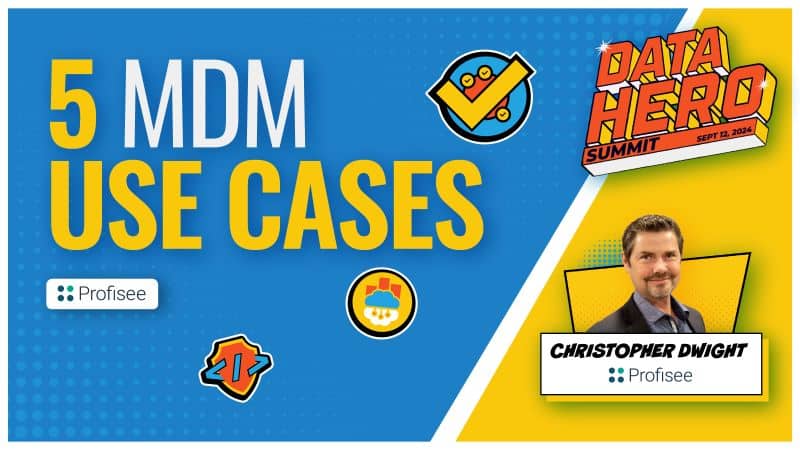It is almost impossible to accomplish any type of digital transformation based on low-quality data, and in particular, untrusted master data pertaining to customers, productions, locations and more.
Data modernization is a key source of growth and revenue for the financial services industry. Digital business requires trusted data in order to carry out business operations and analytics. Because of this, master data management (MDM) is an essential component for organizational success.
The Importance of Master Data Management for Digital Transformation
MDM not only makes data modernization possible, but it also optimizes results while reducing customer fraud and alienation and compliance risk enabling new revenue opportunities.
It is crucial for organizations to have updated reports of customer/client purchase history and their interests to maximize their sales activity and optimize profitability by targeting consumers with relevant offers. For this reason alone, financial services organizations are increasingly looking to implement MDM to power their digital transformation.
The impact of a digital transformation on financial business processes includes:
- Current process enhancement, i.e., things already done sub-optimally
- Example: credit risk assessment during customer on-boarding
- Risk without MDM: mistakenly rejecting or approving customer credit
- Allowance of new processes, i.e., things that cannot currently be accomplished
- Example: cross/up-selling during customer on-boarding
- Risk without MDM: attempting to sell a product the customer already owns or has previously rejected; violating privacy preferences or regulations
How Does Customer Master Data Fit into Digital Transformation?
Software systems often contain lists of customer data that are shared logically and/or physically. These are then used by several of the applications comprising the system.
The data tends to change slowly over time as opposed to changing every time a transaction or interaction occurs (transactional data). This is what is referred to as “customer master data,” and it serves as one of the key assets of a company.
While MDM corrects, enhances, connects and unifies critical financial data, it also creates a “golden record” of this information referencing customer master data across all operational systems. This empowers organizations to deliver on their digital transformation by giving them a “single view” of their customer data: an aggregated, consistent and holistic representation of customer data that can be viewed in one place.
By facilitating trusted access to both the customer’s master and transactional data in those systems, it allows data stewards to automate business rules that can be executed across boundaries that formerly required manual processes during or after the current operation, or not at all.
Master Data Management for Financial Services
When discussing MDM serving as a solution for the financial services industry (FSI), it is important to note the several ways in which MDM provides trusted data specifically to financial business processes and analytics.
MDM reconfigures data quality standards based around the “new” master data model enforced across all entry points. Trusted data is automatically communicated between systems by providing an interface to access this data in real-time. Meanwhile, semantic reconciliation models the definitions of customer, product, etc. throughout the organization. MDM typically serves as the first time the business is accurately modeled in terms of data.
MDM helps financial services firms and organizations navigate the current environment and prepare for resolution. This includes:
- Utilizing customer metrics
- Targeting customer communications
- Monitoring all transfers of assets
- Increased/broader fraud prevention
- Regulatory compliance
- Enhancing product searchability
Master Data Management Provides Optimal Results for Financial Services Success
MDM creates a solid foundation built on trusted data for financial services organizations. By modernizing the customer master data and enhancing overall data quality, it helps organizations avoid unnecessary risks while opening the door to potential revenue possibilities.
For more information about the benefits of MDM for FSI, we conducted an in-depth webinar in conjunction with our partners at Microsoft.
Interested in learning more? Watch MDM and Financial Services: More important Than Ever today and discover how you can improve your customer data to grow your organization.

Bill O'Kane
A former Gartner analyst, Bill O'Kane was the VP & MDM Strategist at Profisee.












